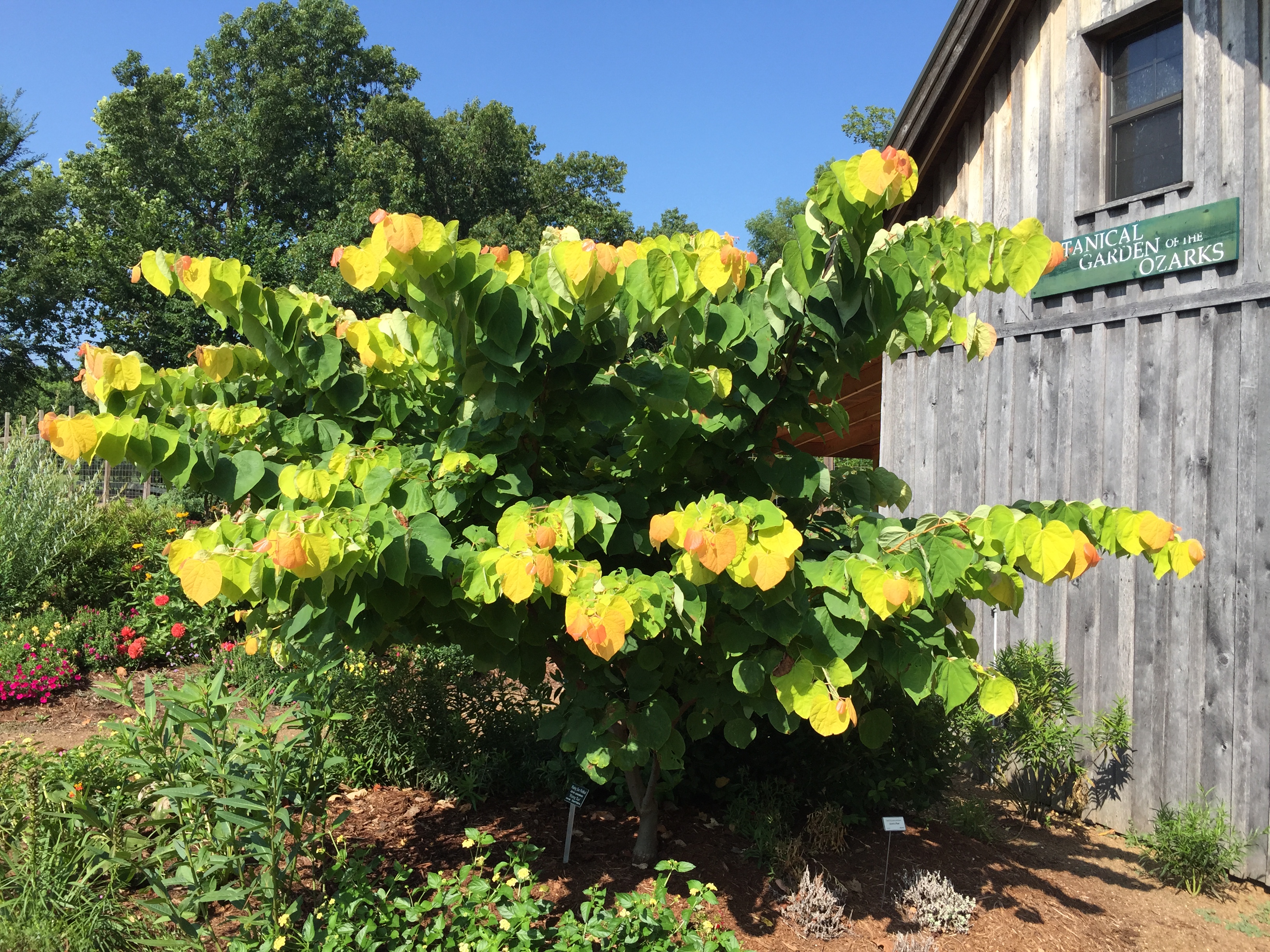Resource Library
Plant of the Week: Cercis canadensis, Rising Sun Redbud
Cercis canadensis, Rising Sun Redbud -- Rising Sun Redbud is one of the yellow leafed landscape plants that says something besides green all summer long. (Image courtesy Gerald Klingaman)
Download High Resolution
Green is one of my favorite colors, but there is something to be said for spicing up the emerald-tinted background of the garden with contrasting hues. Variegated, gray, purple and yellow-tinted leaves on a wide assortment of plants perform this role admirably. A new addition to the foliage color choices in the landscape are the yellow-leafed redbuds such as The Rising Sun™ (Cercis canadensis).
The 10 redbud species belong to the pea family and are scattered throughout much of the northern hemisphere. Our Eastern Redbud is native as an understory tree in the eastern states and into the tall grass prairies of the Great Plains and as far north as southern Canada. It grows as a low branched deciduous tree 20 to 25 feet tall and wide with a more or less rounded crown.
Leaves are characteristically heart shaped and to five inches wide with clear yellow fall color produced on established trees about one year in four. Maroon leafed forms such as “Forest Pansy,” which has been around since the 1970s, are common but the golden leafed clones such as Rising Sun and “Hearts of Gold” are more recent, only being offered since the early years of the 21st century. Within five years an additional half dozen golden leafed selections were being described. Rising Sun was discovered in a row of nursery seedlings in 2007 by Belvidere, Tenn. nurserymen Ray and Cindy Jackson.
The small pea flowers of redbuds are to a quarter inch long and lavender in bud but open pinkish-purple. True pink and white flowered forms are also available. The gray-black, 3 inch long pea pods are at best a distraction to the winter look of the plant; at worst they are downright ugly.
Redbuds and many other shrubs and trees have an indeterminate apical meristem, which means that when the end bud of a shoot goes into dormancy in autumn, there is no preordained number of leaves that will be formed the following summer. As long as growing conditions are favorable, new growth will continue to be produced. For golden leafed plants such as Rising Sun this means there will be continued production of the first orange tinted, then gold leaves which transform to green as they age. If conditions are good and the tree is young and vigorous, bright foliage color can be produced through most of the growing season.
Nurserymen en mass selected the eastern redbud as the tree upon which to lavish their attention during the last decade of the 20th century. Before that time there were almost no redbud clones described and seldom were they actually seen for sale in nurseries. Today that has changed and more than 40 clones are described and offered in the trade. Just as happened with dogwoods 50 years ago, redbuds today are increasingly likely to be offered as clones instead of seedling run trees.
Redbuds are easy to grow adaptable trees that do well in acid or alkaline soil. They are best in full sun or light shade and have good drought tolerance once established. Because they are low branched they should be situated on the edge of the landscape border where they make good specimen plants. Because of the golden foliage Rising Sun would be a good candidate plant for occasionally shearing back in the spring after blooms are finished to maintain a compact size and provide intense blotches of summertime color.
For more information about horticulture or to see other Plant of the Week columns, visit Extension's Web site, www.uaex.uada.edu, or contact your county extension agent. The Cooperative Extension Service is part of the U of A Division of Agriculture.
Pursuant to 7 CFR § 15.3, the University of Arkansas System Division of Agriculture offers all its Extension and Research programs and services (including employment) without regard to race, color, sex, national origin, religion, age, disability, marital or veteran status, genetic information, sexual preference, pregnancy or any other legally protected status, and is an equal opportunity institution.
